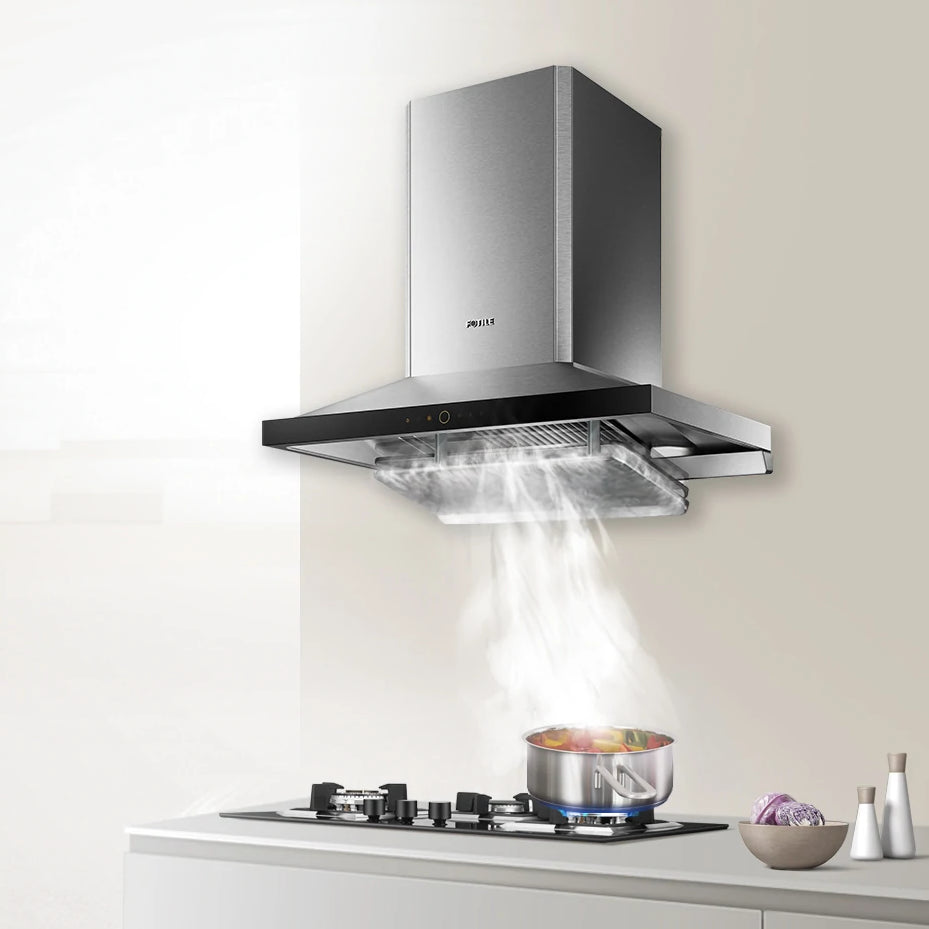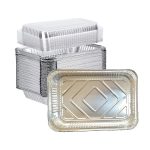Installing a range hood in your kitchen is a critical step towards improving air quality, reducing odors, and enhancing the overall cooking experience. However, achieving the right height for your range hood is essential to maximize its efficiency and maintain aesthetic appeal. This comprehensive guide delves into the factors influencing the optimal installation height, industry standards, considerations for different types of hoods, and the importance of correct positioning.
Understanding the Basics
Range hoods are designed to capture and expel steam, smoke, grease, and odors generated during cooking. Their effectiveness largely depends on their proximity to the cooktop. Installing a hood too high reduces its capacity to capture these elements effectively, while placing it too low can be inconvenient and pose safety risks.
Industry Standards and Recommendations
For most standard installations, the bottom of the range hood should be positioned approximately 30 to 36 inches above the cooktop surface. This distance strikes a balance between capturing rising gases efficiently and allowing enough clearance for pots and pans. However, always refer to the manufacturer’s instructions, as specific models may have unique requirements.
Considerations for Ducted vs. Ductless Hoods
- Ducted Hoods: These models require a duct system to vent outside, making their installation height particularly crucial for maintaining proper airflow. Adhering to the 30-36 inch guideline is generally advisable to maintain optimal venting performance.
- Ductless Hoods: While ductless hoods filter and recirculate air back into the kitchen, their installation height is still governed by the same principles for effective capture. However, some ductless models might be designed with more flexibility due to their different ventilation mechanics.

Factors Influencing Optimal Height
- Cooktop Type: Gas cooktops produce more heat and steam compared to electric ones, which might necessitate a slightly lower installation to improve capture efficiency.
- Hood Type and Design: Chimney-style hoods, island hoods, and under-cabinet hoods each have different design considerations that might affect the ideal height. For example, chimney hoods typically need more vertical space.
- Ceiling Height: In kitchens with high ceilings, adjusting the kitchen range hood height slightly lower than the standard recommendation can improve performance without compromising safety or usability.
- User Comfort and Safety: Consider the tallest person in the household when determining height to ensure there’s ample headroom while cooking.
Special Considerations
- Ventilation Efficiency: If your kitchen has an open floor plan or strong air currents, consulting with a professional might be necessary to determine if adjustments to the range hood standard height are needed for optimal ventilation.
- Local Codes and Regulations: Always check with your local building code office, as some areas may have specific requirements regarding range hood mounting height installation heights and ventilation.

Professional Installation vs. DIY
Given the importance of correct height and the complexities involved, especially for ducted systems, professional installation is often recommended. Experts can assess your kitchen’s unique layout, ensure adherence to safety codes, and optimize the hood’s performance.
Additional Tips and Troubleshooting
In addition to the fundamental guidelines discussed, here are some extra tips and troubleshooting advice to further refine your distance between kitchen range hood installation height:
Adjusting for Cookware Size:
If you frequently use tall or oversized pots and pans, consider a hood with an adjustable chimney or a higher installation point to avoid interference. Some hoods feature a telescopic chimney that can be adjusted to accommodate various cookware sizes.
Noise Reduction:
Range hoods can generate noise during operation, especially at higher speeds. If noise is a concern, consider installing the hood at the upper end of the recommended height range or choosing a model with noise reduction technology. Additionally, proper insulation around the ductwork can help minimize noise transmission.
Lighting Considerations:
Many range hoods come equipped with built-in lighting. Ensure that the lights are positioned correctly to illuminate your cooktop without causing glare or casting shadows. Adjusting the hood height slightly may be necessary to achieve optimal lighting conditions.
Ducting and Ventilation Pathways:
The path your ductwork takes to the exterior of your home can influence hood performance. Straighter duct runs are more efficient than those with multiple bends. If your ductwork has to navigate through tight spaces or several turns, consult with a professional to ensure proper airflow and potentially adjust the hood height to compensate.
Post-Installation Testing:
After installation, test your range hood thoroughly. Turn on all burners and observe how effectively the hood captures steam and odors. If it seems inefficient, minor adjustments to the height may be necessary. Also, check for any air leaks around the hood or duct connections, which can reduce performance.
Regular Maintenance:
To maintain peak performance, clean your range hood filters regularly according to the manufacturer’s instructions. Grease buildup can reduce airflow and efficiency over time. A well-maintained hood will operate closer to its optimal performance level, regardless of its installation height.
Aesthetics and Design Integration:
While functionality is paramount, don’t neglect the visual impact of your range hood. Ensure it complements your kitchen’s design and color scheme. If you’re installing an island hood, consider the hood’s visual weight and how it interacts with the surrounding space.
By incorporating these additional tips into your planning and installation process. You can ensure that your range hood not only functions at its best but also contributes positively to your kitchen’s overall ambiance and usability. Remember, while DIY installations can be tempting, professional assistance can prevent potential pitfalls and guarantee a safe, efficient. And visually appealing outcome.
Ducting Considerations:
- Length and Turns: The length of the ductwork and the number of turns it makes can impact the hood’s performance. Shorter runs with minimal bends are ideal for efficient exhaust. Plan your ducting path to minimize resistance and consider using smooth-walled metal ducts over flexible ones.
- Duct Insulation: In cold climates, insulating ducts can prevent condensation. Which can lead to mold growth or rusting of the hood components.
Lighting Integration:
- Many modern range hoods come equipped with built-in lighting. Ensure the lights are positioned to brightly illuminate your cooktop without casting shadows. Adjusting the height might be necessary to align the light source optimally.

Special considerations for commercial kitchens
-
Minimum clearance: There is a minimum clearance requirement between the cooktop and the bottom of the range hood. This distance depends on the type of cooking equipment below the hood. For appliances without an exposed flame, such as fryers and griddles, a minimum of 18 inches is typically sufficient. For charbroilers and broilers that generate intense heat. A minimum clearance of 30 inches or more is recommended for effective capturing of smoke and grease.
-
Maximum capture velocity: The hood should be close enough to capture smoke, grease. And heat effectively before they rise and spread throughout the kitchen. The National Fire Protection Association (NFPA) establishes standards for maximum capture velocity (the speed at which air moves through the hood) for different types of appliances. Following these standards will help determine an appropriate height for the hood based on the appliance below it.
-
Ergonomics for workers: The hood should not be so low that it impedes the chef’s ability to comfortably work at the range. While there is no specific code requirement. It is generally recommended that the bottom of the hood be at least 67 inches from the floor to allow for comfortable headroom.
-
Ceiling height: The ceiling height will also play a role in determining the optimal height for the range hood. If the ceiling is too low. It may not be possible to achieve the minimum clearance requirements or meet the recommended capture velocity standards. In such cases, a custom hood design or a special ventilation system may be needed.
Cleaning different parts of the range hood
There’s no one-size-fits-all recommended height for cleaning different parts of a range hood in 2024. However, there are recommended heights for installing range hoods to optimize venting and to make cleaning easier in general.
The recommended installation height for range hoods depends on the type of cooktop you have:
- Electric cooktops: 20-24 inches above the cooktop [source]
- Gas cooktops: 24-30 inches above the cooktop [source]
These recommended heights take into account ease of reaching the filters. Which are typically the most frequently cleaned part of a range hood.
Some range hoods, particularly under-cabinet models, may not be adjustable in height. However, some wall-mounted range hoods have adjustable chimneys that can be extended or retracted to fit your needs. This can be helpful if you are looking for a specific height to make cleaning easier.

Achieving the optimal height for your kitchen range hood installation is vital for both functionality and aesthetics. By considering the type of hood, cooktop, ceiling height, and adhering to industry standards. You can ensure your kitchen remains well-ventilated and enjoyable to cook in. Remember. Consulting professional installers and following manufacturer guidelines is key to a successful installation that enhances your kitchen’s functionality and style.



